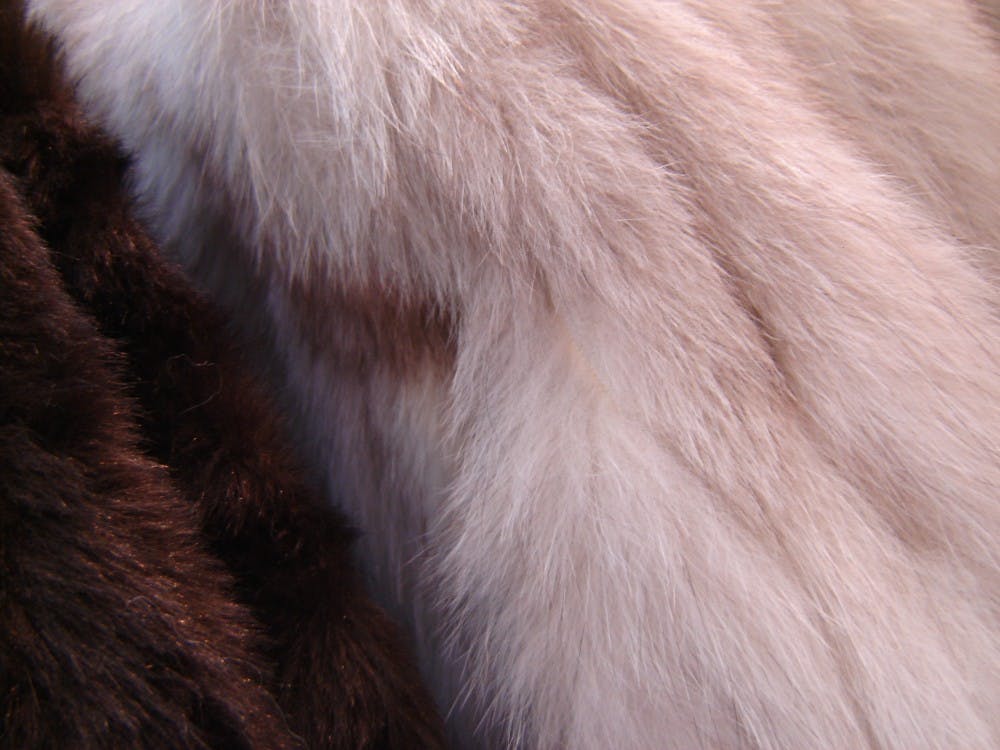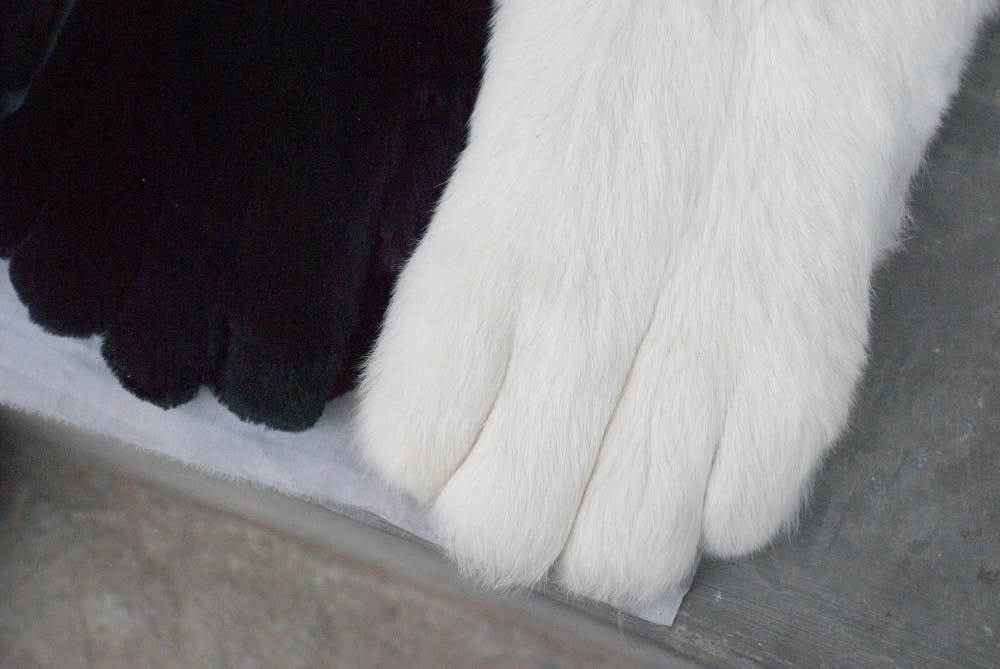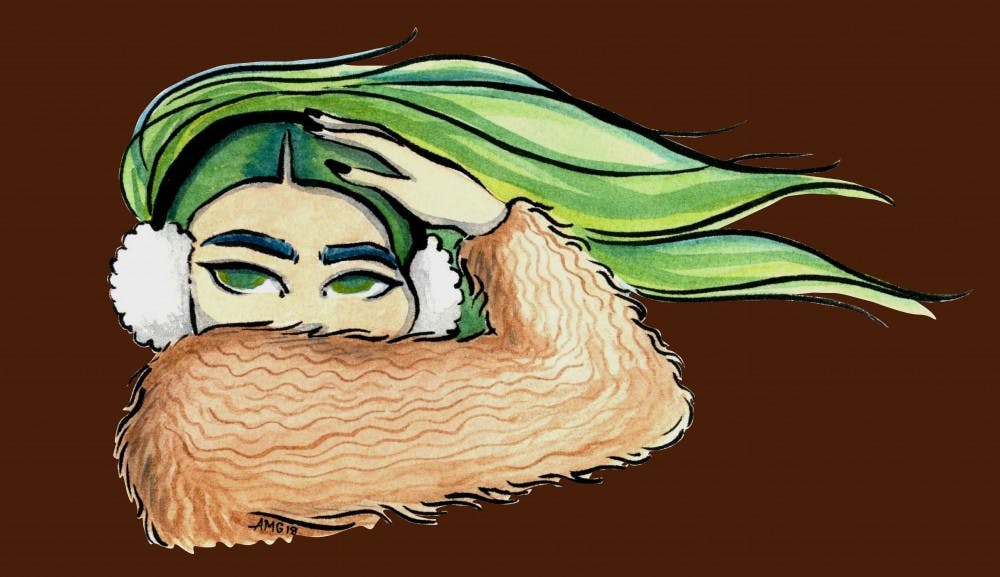Recently, Versace designer Donatella Versace announced that her brand would no longer use fur, joining a growing list of high–fashion brands that are officially against the use of fur. But real fur is still used to make fashion statements, and it only takes one look down Locust Walk to see the large number of students donning parkas with fur–lined hoods. It’s an exceptionally controversial choice of material, made highly public with PETA’s ad campaigns, including the famous “I’d rather go naked than wear fur” slogan.
But just as not everyone chooses to be vegan despite knowing the effects that animal product consumption has on the environment, wearing fur is a personal choice. The lack of unbiased information on the subject can make it confusing for consumers. Regardless of your stance on fur in fashion, it’s important to make an educated decision when shopping for your winter coat.
There are two places from which animals are sourced: fur farms, which breed animals in captivity and ‘harvest’ them for the fur, and fur trappers, who trap animals in the wild. 15% of fur comes from wild animals, including beavers, raccoons, foxes, coyotes, and muskrats. Minks, rabbits, and chinchillas are more commonly farmed.
Eva Spier (C '21) believes “it’s really ridiculous that animals should die for fashion.” She became vegetarian a few months ago because she was “struggling with the fact that animals were dying for my pleasure of eating." Notably, she doesn’t describe herself as vegan. Ideally she would be if it weren’t for how difficult it is to maintain her already restricted diet, citing the lack of choice in dining halls and her being kosher.

Flickr // Monik Markus // CC BY 2.0
In her opinion, the use of fur in fashion is “setting the standard that it’s okay to kill animals just to wear it and that the lives of animals aren’t important,” but adds, “You could justify eating animals for sustenance. I’m okay with that—but just not for myself. But when it comes to wearing animals, you’re literally just trapping and killing them so you can look good.”
There’s definite truth in Spier’s argument. Bottom line, more animals die when fashion trends veer towards fur. But fur farmers defend the use of animals for their fur since the fabric is unique for its warmth and durability.
The relationship between humans and nature has always been a tricky one, but people have taken advantage of wildlife for centuries. The roads and cities we live in were once habitats for animals.
However, coyotes are hunted in certain overpopulated regions where ecosystems benefit from fewer of them. Using the fur of wild coyotes seems to be a practical use of animals that are going to be killed anyway for environmental purposes.
Canada Goose, a company that owes its $3.7 billion worth to coyote fur and goose–down, agrees. The fur–and–down policy on their website describes the ethical measures they claim to take in sourcing their jacket’s materials. They explicitly say that while they respect everyone’s opinions, they ultimately do not agree with the people who “think animal products should never be used in any consumer products.”
Spier believes this ethical sourcing policy is “better,” but “if you’re already acknowledging that animals’ lives are important by taking all these measures, you might as well make synthetic fur that’s just as soft.”
The problem with faux fur is that it’s not as sustainable as real fur. Faux fur isn’t biodegradable and is made from synthetic materials that are derived from petroleum and coal. According to the International Fur Trade Federation, the process of creating faux fur requires three times as much non–renewable energy as real fur. Fur, from the perspective of the fur trade, is a renewable resource.
But then, why use fur or faux fur at all? Spier is “not a big fashion person” and doesn’t see “how some things are necessary to make.” After learning of the negative impact of faux fur on the the environment, she argues, “It’s not necessary to have faux fur on clothing. If it’s not good for the environment then it shouldn’t be mass produced.”

Flickr // Kiran Jonnalagadda // CC BY-SA 2.0
The fur industry understands the complaints of animal rights activists and brands that don’t want to associate themselves with animal cruelty, so it has taken steps to ensure that their animals are not subject to torture or poor conditions. For example, the Origin Assured (OA) initiative approves fur farms in similar style to the regulations that are placed on cattle and poultry farms. They govern the proper handling, nourishment, transporting, and euthanizing of animals to protect their welfare.
One myth about the fur industry is that animals are skinned alive. While that is not only inhumane and impractical, it is also illegal in North America, Europe, and other world regions. The Fur Commission USA, which represents mink farmers, emphasizes "good housekeeping" and a “stress–free environment” with the minks that they breed “because of the fact that a fur–bearing animals' health is directly reflected in their coat."
Of course, there are areas of the fur industry, particularly in less regulated regions, that are undoubtedly horrific. The regulation of global fur production is fractured and like clothing manufacturing, fur production has moved East, where there is less enforcement of animal welfare and weaker legislation. Animals are exploited and sometimes mistreated for their fur. But no industry is free from exploitation and sometimes, it’s the human laborers who suffer from the actions of consumers.
The ethics behind fur production are not black and white. You might make the admirable choice to be completely vegan and not wear fur, leather, or eat animal products. Or you might choose to continue wearing your fur parka for the warmth it provides. Regardless of your beliefs on the consumption and usage of animal products, it is important to ensure your fur is ethically sourced, just as with any of the clothes you buy.

